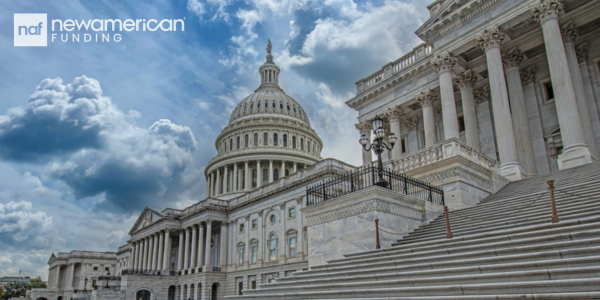Housing News, Videos
FOMC 2022 and Beyond
June 25, 2020
Alexis: Hey, everybody and welcome back to this episode of The Mortgage Rundown. As always, I'm here with Jason Obradovich, CIO of New American Funding. Hey, Jason, how have you been doing the last few weeks?
Jason: Good, Alexis. How about yourself?
Alexis: Been doing pretty good. Hanging in there. So, I know a few weeks back, the FOMC meeting happened. So, can you tell me what's been going on in the last few weeks? Like what did the Federal Reserve have to say?
Jason: Yeah. You know, a really important meeting that we just had. And so, it wasn't necessarily that the market was expecting the Fed to do anything with rates or their buying program. What they did was affirm what they were already doing. And so, they came out basically and said, "Look, we're going to continue to buy Treasuries. We're going to continue to buy mortgage-backed securities. We're going to support the liquidity of the market just to make sure the markets are functioning properly." And then the really big thing that they said and this, you know, has a lot of ramifications, is that they said, "look, we're going to keep interest rates low at least through 2022."
So, through 2020, 2021, and 2022 that is really forecasting that we should expect to be in this rate environment for a very long time. And so that does a couple of things. You know, it really assures the market that this is not a temporary thing. Not necessarily just COVID, but there is this market disruption. And one of the things that really, you know, scare investors is, you know, the Fed might come in. But they might step back out. And so, people would be very fearful of stepping in and investing right now. But when the Fed gives you that kind of guarantee, it really assures not just short-term investors, but long-term investors that they're going to provide liquidity and keep rates at, you know, at these levels for a long period of time.
Alexis: OK, so what about the liquidity side? We've heard that certain types of loans just don't have as much interest anymore. So, can you update us on that front?
Jason: Yeah, that's a good question. So, you know what happened after March or right as the whole world and, especially the United States, there were all of these shutdowns. The investment community just said, "I don't want any risk, anything that's even perceived to have risk." That could be high-quality borrowers. That could be borrowers with certain credit issues. But what happened immediately back in March was people said, "Look, I don't want any investments that have any credit risk at all." And it just got shut off right away. Right? Those markets seized. And so, there was no liquidity. Now things have started to open back up. We have a little better estimate of the impact on the economy. And so now when you have the Federal Reserve coming out and saying, "Look, we're going to we're going to support the markets at least through 2022." That gives a lot of assurance to investors that, look, you can make long-term investments, whether they be high-credit borrowers and maybe even to some degree, lower-credit borrowers. And so, to answer your question, we are seeing investors starting to open up the credit box a little bit. We're nowhere near where we were before the crisis, but it is starting to open up a little bit.
Alexis: OK, cool. So, going off of that, looking ahead, when do you expect markets to return back to normal? I mean, I don't think there is going to be an exact answer, but when can we expect some normalcy again?
Jason: Yeah. When we return to normal is a tough question. So, if you were to go back to 2008, right, we had the whole credit markets, the whole world had had to deal with this whole mortgage meltdown. And I think people were always wondering, when will you return back to that normal? And the answer was never. We were never going to return back to that normal because there were just certain mortgage products that never should have been originated in the first place. But where we were pre-crisis was in a really good spot. There were Non-QM loans were trading, people with credit issues like, you know, recent foreclosures or bankruptcies. Those loans were trading. They were able to get you to know, they were able to get loans even if they had a recent foreclosure or bankruptcy. And so those markets were actually functioning really well. When do we actually get back to where we were? You know, that's a tough question. It will not be in 2020. 2021 would really be anyone's guess, but probably somewhere in 2021. It really depends on when everyone's life returns back to normal. Right? When can people function as they did before? We're not there yet. So, it's really hard to gauge when those markets will trade like they were before. But, you know, if I'm a betting man, I would say 2021 sometime, maybe a year from now.
Alexis: OK, cool. Got it. Well, only time will tell. We'll see.
Jason: Absolutely like every month the world is going to look very different than it does right now. The capital markets are going to look very different than what it does right now.
Alexis: Yeah, absolutely. Well, that's all I have today. I appreciate you hopping on to update all our viewers. This was a lot of great information. And I appreciate your time.
Jason: Yeah, thank you. I enjoyed it. We'll talk to you soon.
Alexis: All right. Sounds good. Bye, Jason!






 Smart Moves Start Here.
Smart Moves Start Here.